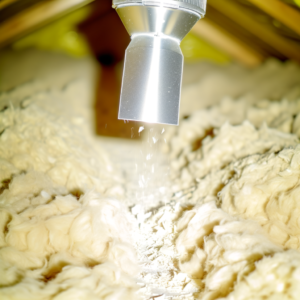The Ultimate Guide to Blown-In Insulation for Homes
Table of Contents
- Introduction
- What is Blown-In Insulation?
- Key Benefits of Blown-In Insulation
- Installation Process
- Choosing the Right Materials
- Understanding Costs
- Maintaining Your Insulation
- FAQ Section
- Conclusion & CTA
Introduction
Blown-in insulation, a critical solution for enhancing home energy efficiency, offers numerous benefits including reduced energy costs and improved comfort. This guide covers everything you need to know about upgrading your home with blown-in insulation.
What is Blown-In Insulation?

Blown-in insulation, also known as loose-fill insulation, involves blowing or spraying insulation materials into place, using special equipment. It’s ideal for attics, wall cavities, and difficult-to-reach areas, providing a compact barrier against heat flow.
Key Benefits of Blown-In Insulation
- Enhanced thermal performance: Keeps your home warm in winter and cool in summer.
- Reduced energy bills: Effective insulation can significantly cut heating and cooling costs.
- Improved soundproofing: Helps to reduce noise from outside and between different rooms and floors.
Installation Process
Step 1: Pre-Installation Assessment
An in-depth assessment to determine the best insulation type and strategy for your home.
Step 2: Preparing the Space
Includes clearing the area and ensuring that air leaks are sealed prior to installation.
Step 3: The Blowing-in Process
Specialized machines are used to blow the insulation into the identified spaces.
Choosing the Right Materials
Selection between fiberglass, cellulose, or mineral wool, each having distinctive properties suitable for various needs.
Understanding Costs
Factors affecting cost include the type of material chosen, the size of the area to be insulated, and the complexity of the installation.
Maintaining Your Insulation
Generally requires minimal maintenance, with inspections recommended every few years to ensure optimal performance.
FAQ Section
Q: What is the R-value in blown-in insulation?
A: The R-value measures the insulation’s resistance to heat flow. The higher the R-value, the better the insulation performance.
Q: Can blown-in insulation be added over existing insulation?
A: Yes, in most cases, blown-in insulation can be layered over existing insulation unless there is damage like mold or dampness.
Q: How long does blown-in insulation last?
A: When properly installed and maintained, blown-in insulation can last over 30 years.
Conclusion & Call to Action
Blown-in insulation is a cost-effective and efficient way to improve your home’s energy performance. It’s an investment in comfort, cost-saving, and energy efficiency.
???? Click Here to enhance your home’s comfort and efficiency with expert blown-in insulation services. Click here!
“`




